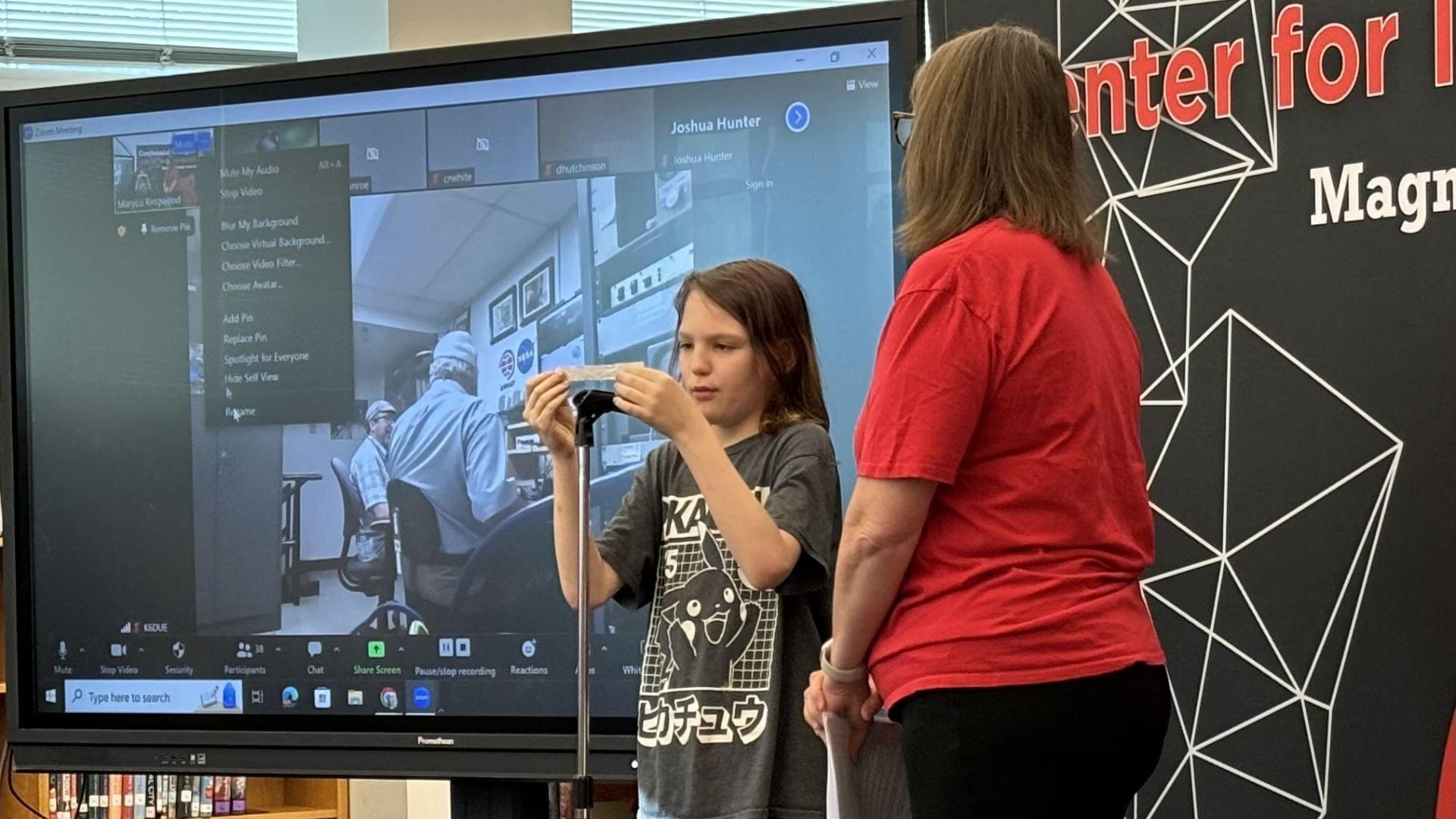NC Students Experience an Out-of-This World Science Lesson


The school day at Centennial Campus Center for Innovation Magnet Middle School in Raleigh started a little differently on May 1.
Roughly 500 students were in their seats, but their guest teacher was not in the building. He wasn’t even on the planet.
Instead, NASA astronaut Matthew Dominick was traveling at 17,800 mph 240 miles above the Earth in orbit as a commander on the International Space Station (ISS). Amateur Radio on the International Space Station (ARISS) had arranged the lesson. Each year, the group conducts roughly 100 of these special amateur radio contacts between students around the world and crew members aboard the ISS who have ham radio licenses.
“When I was your age, I fell in love with space, the stars, the planets, how big it was and how much there is still to learn,” Dominick told students. “Do what you love, follow what makes you happy and brings you joy, and that’s what you were meant to be.”
Centennial Campus Center for Innovation is a Wake County Public School for grades 6 through 8. The teachers said their students made an instant connection, listening carefully and even waving hello and goodbye.
“They hear about the ISS but it’s not really real to them since it’s not a part of their daily lives,” said MaryLu Ringwood, instructional design coach and technology facilitator with Wake County Public Schools. “But this made it real, and then they could see where innovation and technology and global thinking can take us. And Dominick really connected with them and brought it all home.”
The faculty submitted plans for the lesson from space almost one year ago. Schools across North Carolina were able to watch the class.
Students prepared 20 questions to ask Dominick, a U.S. Navy test pilot who joined the astronaut corps in 2017. They were able to ask all of them. Here’s a small sample of their questions and his responses:

Have you ever worked with others in the station on a collaborative project? If so, how did you collaborate as a team?
“While we all have our assigned duties and roles, and our day is very scheduled, we are constantly working together. There’s been so many books written on this because it’s just such an important aspect of how to work as a team. I’ll take one thing, and that’s just clear communications early and up front. Everybody knows where everybody stands and what you’re going to do.”
How does it feel when you come back down to Earth? Does it feel weird because of the difference in gravity?
“This is my first time in space, so I’ve not come back yet to Earth. I won’t do that for another four months, but I can tell you initially it feels pretty weird to be floating around all day long and then after a couple of weeks you get really used to it and love it a lot.”
“The conversation with the astronaut solidified for our students and our staff that the characteristics of an innovator that we use daily really do build towards success,” said Kathryn Hutchinson, Centennial Campus Middle School principal. “The kids loved hearing the astronaut use the words that we use in class, like resilient or creative. What we learn came to life through the experience and the conversation.”
Teachers also worked ISS-related topics into their lessons such as building a moon lander, a shock-absorbing system that protected two astronauts (marshmallows) when landing on the moon (dropped from a height). Students also took a virtual tour of the ISS.
“Throughout the school year, we work to connect the characteristics of innovation with the students, especially the design thinking process, which is empathize, define, ideate, prototype and test,” said Rachel Frasier, the school’s magnet coordinator. “And the students lit up when they heard how that process is used to guide everything on the ISS. It just brought everything we’re teaching home. It was so exciting.”
You can track ISS’ location, when it will be visible to you and more by visiting this page on the station’s website.